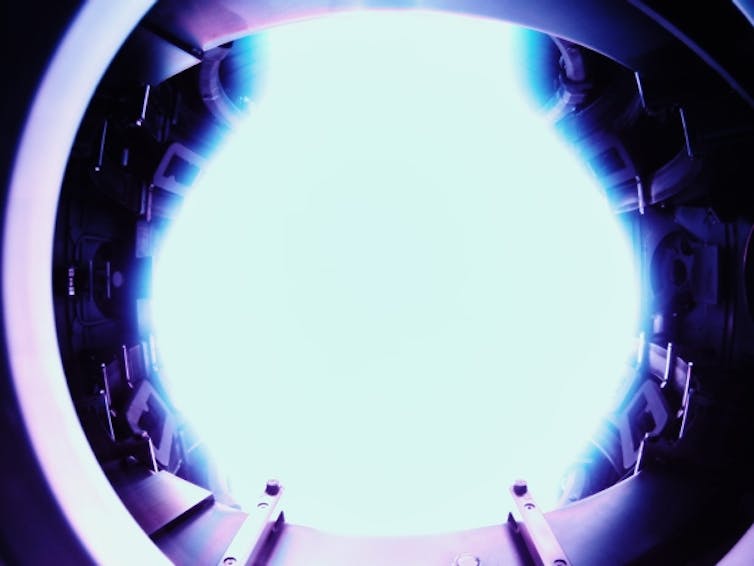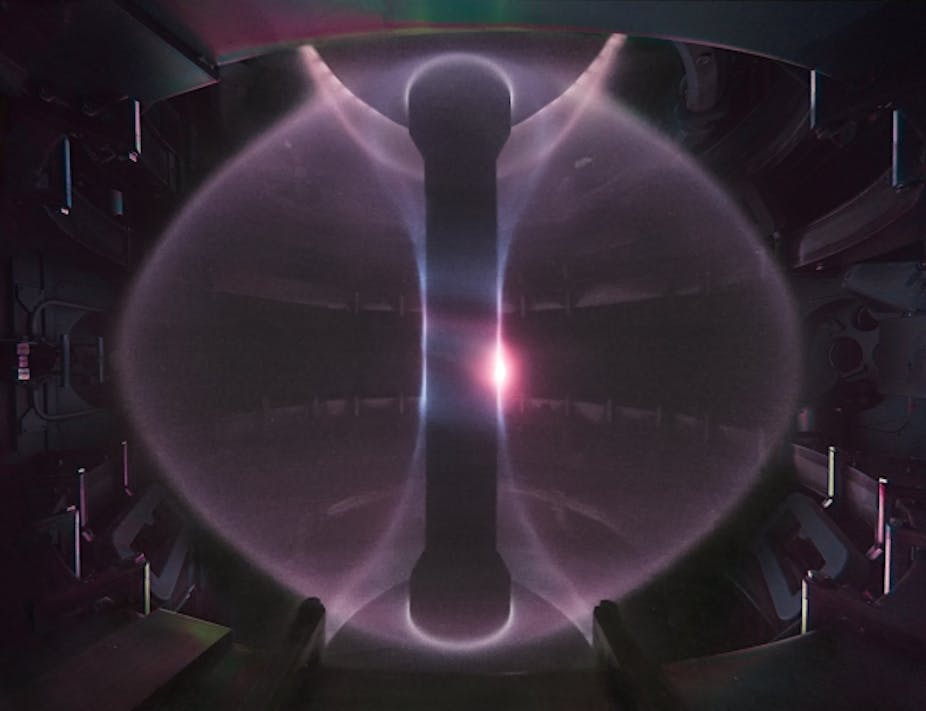The latest results from the National Ignition Facility in the US represent the passing of a nuclear fusion power milestone and come after a year of significant progress at projects in France and the UK.
The concept underpinning energy release from nuclear processes dates back to 1905 when Albert Einstein wrote his most famous paper. Writing on his theory of relativity, an observation in the paper became the world’s most famous equation: E=mc2
This startling observation became the key to understanding both nuclear fission and nuclear fusion. It ultimately tells us that when heavy elements such as uranium are split, they release a huge amount of energy – this is called fission. Similarly, when we join light elements such as hydrogen together this is called fusion, and also releases energy. Both processes are at a scale of energy release that is typically millions of times greater than conventional chemical reactions, such as burning coal or gas. They also have a huge benefit – they do not produce carbon dioxide as a direct by-product.
These two technologies took rather different routes as they developed. Even Einstein himself had initially thought that a fission-powered atomic bomb might not be possible as a practical device – indeed early, and ultimately incorrect, calculations showed that it would need to be so massive that only a huge cargo ship could carry it.
Atoms for war and peace
It was work done by Otto Frisch (one of the pioneers who first understood the fission process) and Rudolph Peierls at the University of Birmingham in Britain during the Second World War which showed how enriching uranium could instigate a self-sustaining process – a “chain reaction” – with a much smaller amount of material.
The first human-initiated chain reaction was set up by Enrico Fermi, and famously took place in a squash court at the University of Chicago in 1942 – and with the world at war, much work was done to find military uses for nuclear fission, culminating in the Manhattan Project – the US project to produce an atomic weapon.
Following the war, remarkably, the fission programme went from that small-scale demonstration of principle to full-scale power station electricity generation within a short period of only about 15 years. The world’s first nuclear fission station to send a significant amount of electricity to a national grid was powered by Britain’s Calder Hall reactors next to the Sellafield site when they were opened by the Queen in 1956. The Americans followed the British in the following year with the Shippingport reactor.
Fusion, a more complex beast
In contrast to fission, the promise of fusion power is much more challenging and has taken much longer to develop. After decades of research we are still without a functioning fusion power station, although significant progress has been made. The potentially enormous benefits to humankind, should fusion energy production be made both practical and economic, would amply repay the research effort. Fusion could end up being a vital component in a future low-carbon energy mix and may even become the main energy source in use for the latter part of this century and into the future.
Fusion is what happens at the heart of stars like our sun, generating such vast quantities of energy that light and heat reaches the Earth across tens of millions of miles of cold space.

To harness the power of fusion, the light elements it uses as fuel must be heated to such high temperatures – around 100,000,000°C – that they become a highly charged plasma. This is energy-intensive to heat and difficult to control once heated. But only under these conditions will the atoms fuse together, bound by the strong nuclear force, one of the four fundamental forces. This holds an atom’s nucleus together despite the fact that the positively charged protons it contains naturally try to repel each other.
The sun is capable of sustaining a continual fusion reaction because of its immense, self-sustaining heat and its colossal size that generates vast gravitational forces. On Earth, we have to contain the plasma by generating our own complex magnetic fields as have been used at the JET and MAST facilities at the Culham Centre for Fusion Energy in the UK and will be used at ITER in France. An alternative is to provide intense compression to the material, such as via laser heating as used at the NIF in the US.
Material challenges
The most promising fusion reactor design in use is the tokamak, a toroidal, doughnut-shaped chamber around which the high-temperature plasma flows, confined to the chamber and held away from the walls by powerful magnets. The complexities of fission seem minor by comparison – fission can take place at room temperature, and the fission chain reaction is propagated by uncharged particles called neutrons that, being uncharged, require no complex magnetic confinement.
Another practical issue that must be surmounted is the damage dealt out by the fusion reaction to the reactor’s components from the huge amount of energy it creates. The fuel rod assemblies used to deliver fuel into fission reactors’ cores suffer from this damage to some degree, but as these are replaced when the reactor is refuelled it doesn’t become a problem. The challenge for a fusion reactor is to design structural materials for the tokamak that can withstand the significant damage, at the microscopic level, that such huge amounts of energy delivers.
These two challenges – plasma containment and materials research – are the largest technical reasons why fusion has still yet to leave the development stage. But with essentially limitless hydrogen fusion fuel compared to finite supplies of uranium fission fuel and considerably reduced potential problems from radioactivity (decay times for a future fusion powerplant are 50-100 years), fusion power remains energy’s holy grail. The saying about fusion power is that it is always “30 years away” – perhaps with recent developments that 30 years has finally stopped being pushed back and has started counting down.

